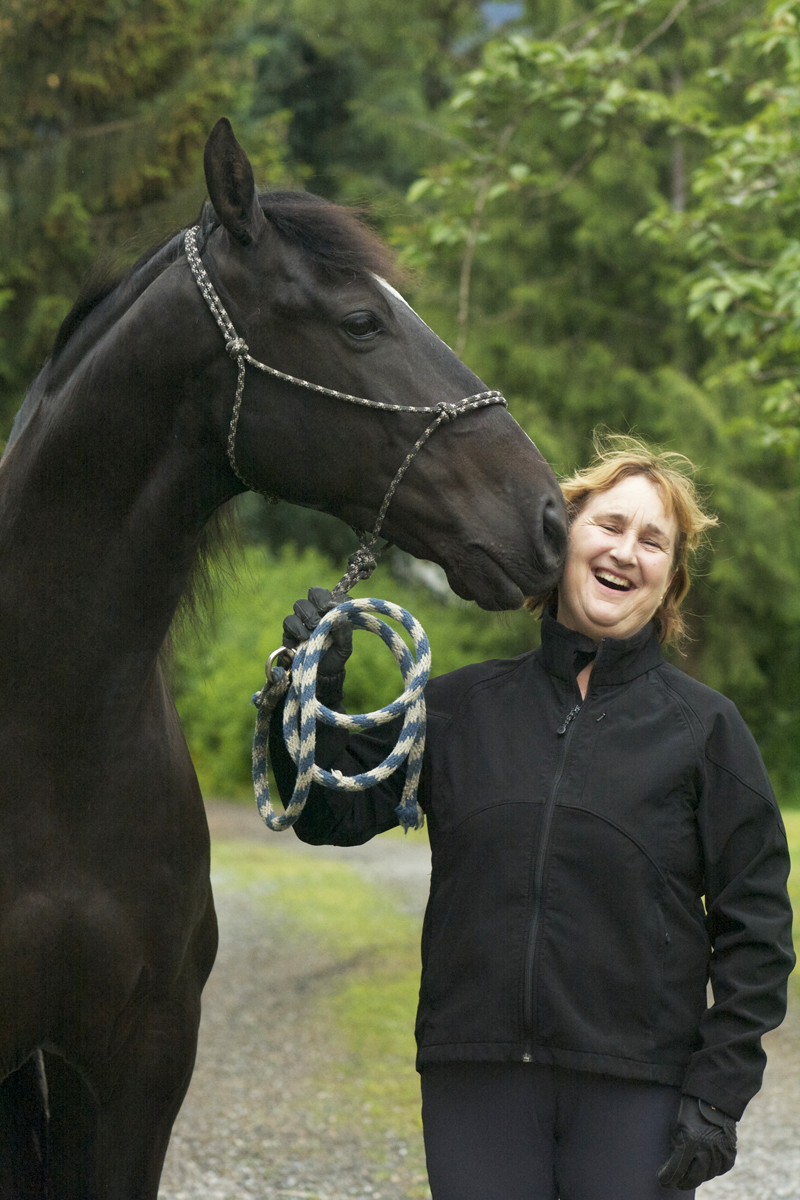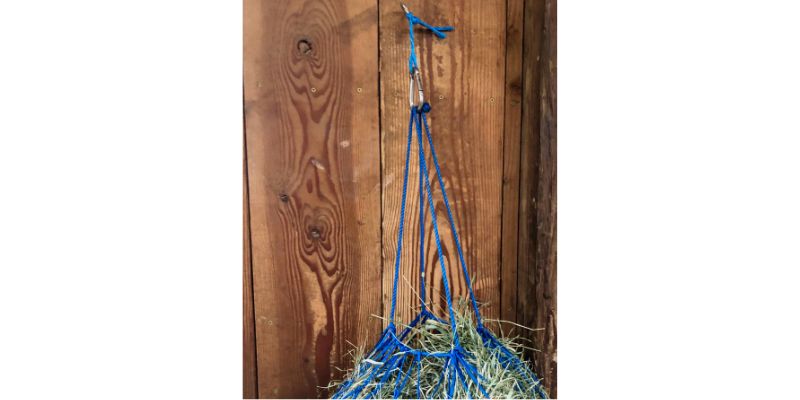By Kim Roe
Hay nets, both the traditional and the small hole variety, are useful tools found in most horse barns. Small-hole nets slow down eating for horses who bolt their feed, which can cause gas and/or impaction colics. These nets also help with weight management by making horses work more for their food, and they aid in the prevention of ulcers by keeping food in front of horses for longer periods of time. Hay nets also prevent hay waste by keeping hay from becoming spoiled by bedding, manure, or urine.
But hanging hay nets can be a chore. Untying tight knots can be frustrating, time consuming, and difficult to do with gloves on. Hay nets are also notorious for catching hooves which can cause serious injury.
For ease in hanging and removing your hay nets install a sturdy eye bolt into your horse’s stall wall. Then tie a piece of baling twine through the eye bolt and clip a large non-locking carabiner clip into the baling twine. When you hang your net, pull the net’s string together like a purse string and clip it into the carabiner clip (see photo). If your horse gets hung up the baling twine will break. No more knots! An additional benefit to using the baling twine is you can allow your nets to be tied lower which aids in breathing and a better alignment of neck and spine. If your horse catches a hoof, the twine will break. I usually tie my horses’ nets between shoulder and knee height.
See this article in the March/April 2023 online edition:
March/April 2023

Kim Roe grew up riding on the family ranch and competed in Western rail classes, trail horse, reining, working cow, and hunter/jumper. She trained her first horse for money at 12 years old, starting a pony for a neighbor.
Kim has been a professional dressage instructor in Washington state for over 30 years, training hundreds of horses and students through the levels. In recent years Kim has become involved in Working Equitation and is a small ‘r’ Working Equitation judge with WE United.
Kim is the editor of the Northwest Horse Source Magazine, and also a writer, photographer, and poet. She owns and manages Blue Gate Farm in Deming, Washington where she continues to be passionate about helping horses and riders in many disciplines.

